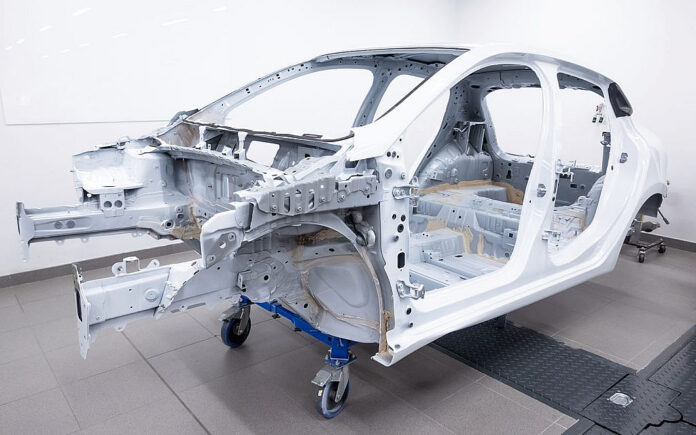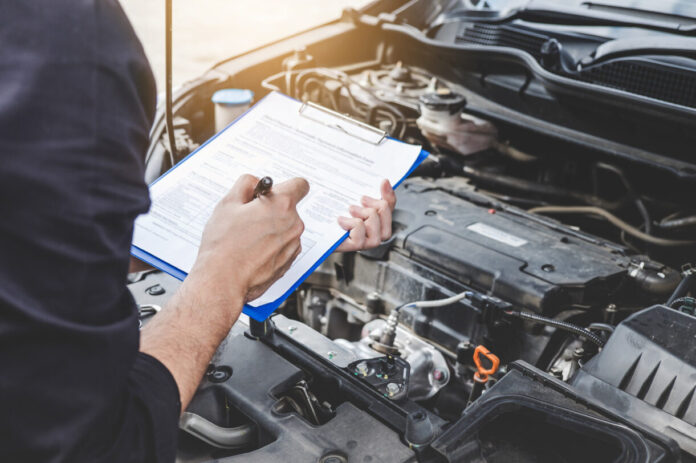Just as the human body relies on its skeleton for structure, balance, and protection, a vehicle is dependent on its chassis for stability, support, and overall performance. Understanding car chassis can transform how one perceives automotive engineering, illuminating the essential role it plays in ride quality, handling dynamics, and safety.
A vehicle’s chassis serves as the backbone, uniting various components and influencing how they interact. Yet, most drivers might not give it a second thought until there’s an issue. Exploring the different chassis types and the materials used in their construction offers valuable insights into their importance. If you wanna read more about classic car chassis, read more here.
This article will take you on a journey to better understand the intricate framework that supports your vehicle and keeps you safe on the road.
What is a Car Chassis?
A car chassis serves as the fundamental structure of a vehicle, providing both support and integrity. It plays a crucial role in the overall stability and handling of the vehicle, connecting various automotive components such as the engine and suspension systems.
Definition and Functions
The car chassis definition refers to the underlying framework that supports the vehicle’s body, engine, and essential systems. The functions of the chassis include absorbing shocks from the road, providing structural integrity, and facilitating the attachment of key components. Without a robust chassis, vehicle handling and stability would significantly suffer, affecting overall performance and safety.

Types
Different vehicles employ various chassis designs tailored to their specific needs. The primary types include:
- Body-on-frame ─ Common in trucks and SUVs, this design features a separate body mounted on a strong frame, allowing for durability and easier repairs.
- Unibody ─ In this design, the body and frame are combined into a single cohesive structure. This method is prevalent in passenger cars, offering weight savings and improved fuel efficiency.
Each type of chassis provides unique advantages that cater to different driving experiences, balancing performance with practicality.
Materials Used in Construction
The choice of materials significantly influences a vehicle’s performance and characteristics.
| Material | Properties | Applications |
| Steel | High strength, cost-effective, heavy | Conventional cars, trucks |
| Aluminum | Lightweight, corrosion-resistant | Sports cars, luxury vehicles |
| Carbon Fiber | Ultra-light, extremely strong | High-performance and supercars |
These chassis materials each bring distinct characteristics, affecting weight distribution, ride quality, and safety standards. Knowledge of types of chassis and their respective materials is essential for understanding vehicle performance and design. By adapting the automotive frames to specific applications, manufacturers can enhance the driving experience and maintain safety across various vehicle types.

Components
The car chassis consists of various critical components, each playing a vital role in maintaining vehicle stability, safety, and performance. Understanding these components provides insight into how they interact to provide optimal functionality.
Frame Rails
Frame rails are the backbone of the chassis, providing essential structural integrity. These long, sturdy beams run parallel along the underside of the vehicle, supporting the weight of the body and ensuring proper alignment of other components. Their strength directly influences vehicle stability, enabling it to withstand loads and stresses encountered on the road.
Suspension Systems
The suspension systems are remarkable engineering feats designed to absorb shocks from the road. This system includes springs, shock absorbers, and various linkages that work together to maintain a smooth ride. By responding to imperfections in the road surface, suspension systems greatly enhance comfort, control, and overall driving experience while contributing positively to vehicle stability.
Engine and Transmission Mounts
Engine and transmission mounts secure the powertrain components within the vehicle’s chassis. These mounts minimize vibrations and impacts from the engine, resulting in a smoother operation. A solid foundation through these mounts not only enhances ride quality but also optimizes the relationship between engine performance and vehicle stability.

Brackets and Crossmembers
Brackets and crossmembers support various mechanical elements such as the fuel tank and drivetrain. Positioned strategically throughout the chassis, these components distribute weight evenly, significantly contributing to balanced handling and performance. Their presence ensures that all parts of the vehicle work cohesively, helping uphold the overall stability and durability required for a safe driving experience.
| Chassis Component | Function | Impact on Stability |
| Frame Rails | Provide structural support | Essential for overall vehicle stability |
| Suspension Systems | Absorb shocks and improve ride quality | Enhances comfort and control |
| Engine and Transmission Mounts | Secure powertrain components | Minimizes vibrations for smoother operation |
| Brackets and Crossmembers | Support critical elements | Ensures balanced handling and performance |
Maintaining Your Vehicle’s Chassis
Proper maintenance of a vehicle’s chassis is essential for safety, performance, and longevity. Engaging in regular inspections and proactive care can significantly enhance the lifespan while preventing costly repairs. Below are key practices to ensure effective maintenance.
Regular Inspections
Routine visual inspections are crucial for identifying signs of damage or wear. Key areas to focus on include:
- Frame rails for cracks or distortions.
- Suspension components for signs of fatigue.
- Mounting points for any looseness or corrosion.
Regular inspections aid in the early detection of potential issues, contributing to overall vehicle care and safety on the road.

Preventative Care and Cleaning
Performing regular cleaning of the undercarriage is vital for rust prevention. Dirt and debris can accumulate, leading to rust formation. Consider these practices:
- Wash the undercarriage periodically, especially after winter or heavy rain.
- Apply protective coatings designed for chassis protection.
- Use wax products that help guard against moisture.
These measures not only prolong the lifespan but also improve driving comfort and safety.
Addressing Rust and Damage
Rust can severely compromise the structural integrity of a chassis. Addressing rust promptly is necessary for effective chassis maintenance. Steps to take include:
- Inspect for rust spots during regular inspections.
- Use rust inhibitors and treatments to mitigate corrosion.
- Replace or repair damaged chassis components as needed.
By taking immediate action against rust and damage, vehicle owners can maintain the overall performance of their vehicles and ensure safety for all passengers.
Last Words
In conclusion, a thorough understanding of the chassis empowers owners to make informed decisions regarding vehicle operations and maintenance. Acknowledging its integral role fosters a deeper appreciation for automotive mechanics and enables one to prioritize safety and performance, ultimately leading to a more enjoyable driving experience.







